Introduction
In the age of hybrid work and remote offices, having a well-equipped home workspace is no longer a luxury—it’s a necessity. Whether you’re a freelancer, remote employee, or small business owner, your home office needs to support not only your day-to-day tasks but also your long-term productivity and comfort. Setting up a tech-savvy home office can streamline your workflow, reduce distractions, and make every workday more efficient.
In this guide, we’ll walk you through how to set up your home office with latest tech—covering everything from assessing your needs to choosing the right gadgets and future-proofing your space.
Assessing Your Space and Needs
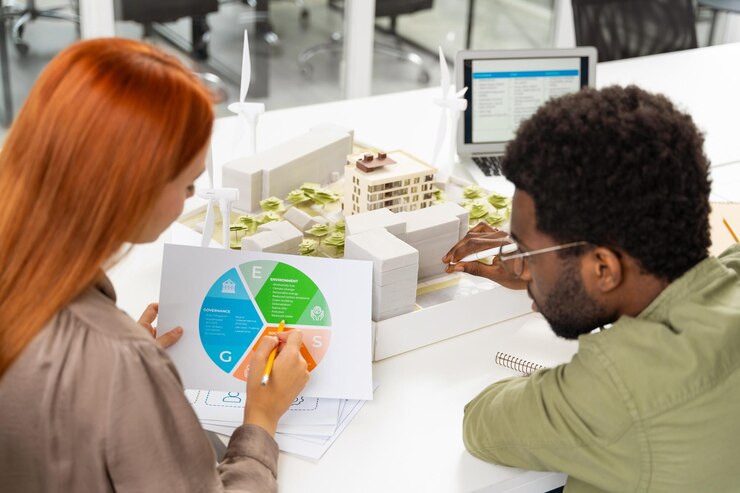
Before buying any equipment, start by evaluating your available space. Choose a quiet location with natural lighting to reduce eye strain and boost mood. Consider ergonomics—opt for a space where you can comfortably sit or stand with proper posture.
Next, assess your job role. Developers may require dual monitors and high-speed processors, while content creators might prioritize graphic cards and editing tools. Determine your daily tech requirements, then categorize them into essentials and potential upgrades.
Finally, set a budget. You don’t need to splurge on everything at once—prioritize the must-haves, and invest in upgrades over time.
Must-Have Tech Essentials for Your Home Office
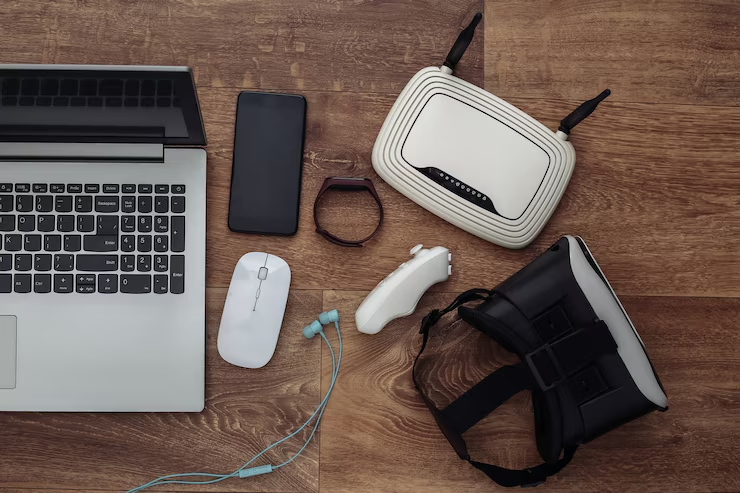
1. High-Performance Computer or Laptop
Choose a device that matches your workload. Key specs to consider:
- RAM: Minimum 8GB, 16GB+ for multitasking or creative work.
- Processor: Intel i5/i7 or Apple M1/M2 for smooth performance.
- Graphics Card: Crucial for designers, editors, and gamers.
- SSD: Solid State Drives offer faster boot times and responsiveness.
2. Reliable High-Speed Internet
Your internet is the backbone of remote work. Aim for:
- Minimum Speed: 100 Mbps for video calls, streaming, and file transfers.
- Wi-Fi Enhancements: Consider mesh Wi-Fi systems (like Google Nest WiFi or Eero) for whole-home coverage or Wi-Fi range extenders if your workspace is far from the router.
3. Dual or Ultra-Wide Monitors
Multiple screens improve multitasking, reduce window switching, and enhance productivity. Ultra-wide monitors can replace dual setups, ideal for video editors or analysts.
4. Ergonomic Accessories
Don’t underestimate comfort. Invest in:
- Adjustable standing desks
- Ergonomic chairs with lumbar support
- Ergonomic keyboards and mice to prevent strain
5. Docking Station and Cable Management
Keep your desk tidy with a multi-port docking station. It allows you to connect multiple devices—monitors, chargers, USB hubs—without clutter. Use cable organizers or under-desk trays to maintain a neat setup.
Smart Gadgets and Devices That Elevate Your Setup
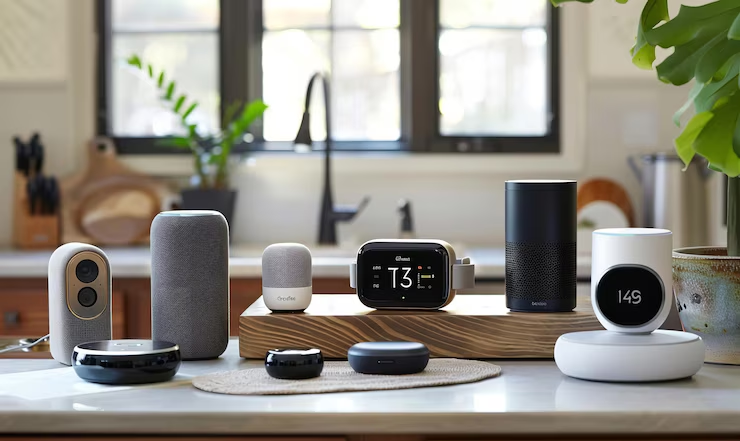
Upgrade your experience with these smart tools:
- Smart Lighting: Brands like Philips Hue or Govee allow you to adjust brightness and color temperatures, enhancing mood and reducing eye strain.
- Voice Assistants: Amazon Alexa and Google Assistant can help schedule meetings, set reminders, or control lights—hands-free.
- Wireless Chargers and USB Hubs: Charge multiple devices efficiently without tangling cables.
- Smart Thermostats & Air Purifiers: Maintain optimal temperature and air quality for better focus and health.
Audio & Video Tools for Virtual Communication
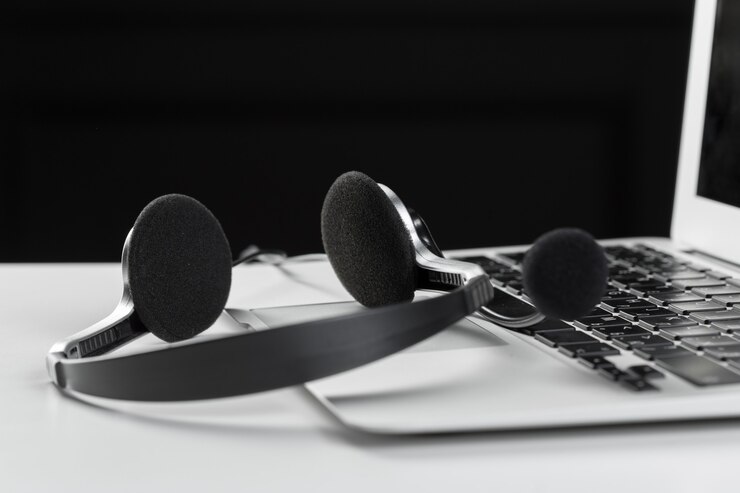
Video conferencing is integral to remote work. Ensure your setup includes:
- HD Webcam: Choose a model with autofocus and 1080p or higher resolution.
- Noise-Canceling Headphones: Block distractions and enhance audio quality during calls.
- External Microphone: For clear, professional-sounding voice.
- Ring Lights or LED Panels: Improve lighting for video calls and reduce unflattering shadows.
Productivity and Collaboration Tools

Digital tools can boost team collaboration and keep you organized:
- Project Management: Use platforms like Trello, Asana, or Notion for task tracking.
- Cloud Storage: Services like Google Drive, Dropbox, or OneDrive ensure your files are secure and accessible.
- Time Management: Tools like RescueTime, Clockify, or Pomofocus help monitor work hours and productivity.
- VPNs and Cybersecurity: Protect your data with secure VPNs and up-to-date antivirus software.
Design Tips for a Modern, Tech-Enhanced Home Office
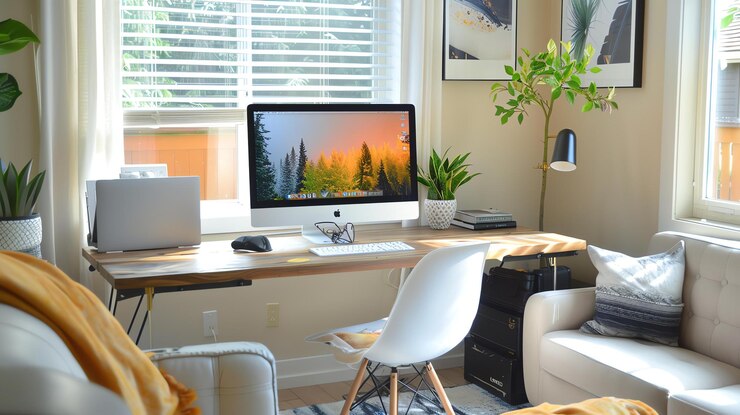
An organized and stylish workspace improves morale and creativity:
- Cable Management: Use clips, sleeves, or trays to hide cables and declutter.
- Minimalist Design: Choose neutral tones, simple furniture, and hide excess wires for a clean aesthetic.
- Personal Touches: Add indoor plants, art, or custom décor to make the space feel inspiring and uniquely yours.
Keeping Your Home Office Future-Proof

Tech is always evolving. Stay ahead with these tips:
- Emerging Trends: Keep an eye on AI-powered tools, AR/VR for remote collaboration, and voice-controlled environments.
- Upgrade Plan: Prioritize components that will give the highest performance boost—RAM, SSD, monitors.
- Sustainable Choices: Choose energy-efficient tech, rechargeable accessories, and responsibly manufactured products.
Conclusion
Creating a high-tech home office is about more than just cool gadgets—it’s about optimizing your work-from-home life for productivity, comfort, and future growth. From ergonomic furniture and powerful laptops to smart lighting and collaboration tools, every piece plays a part in building a workspace that works for you.
Ready to boost your workflow? Start small, prioritize your essentials, and gradually integrate the latest technology. With the right setup, working from home can be just as effective—if not more—than working from a traditional office.